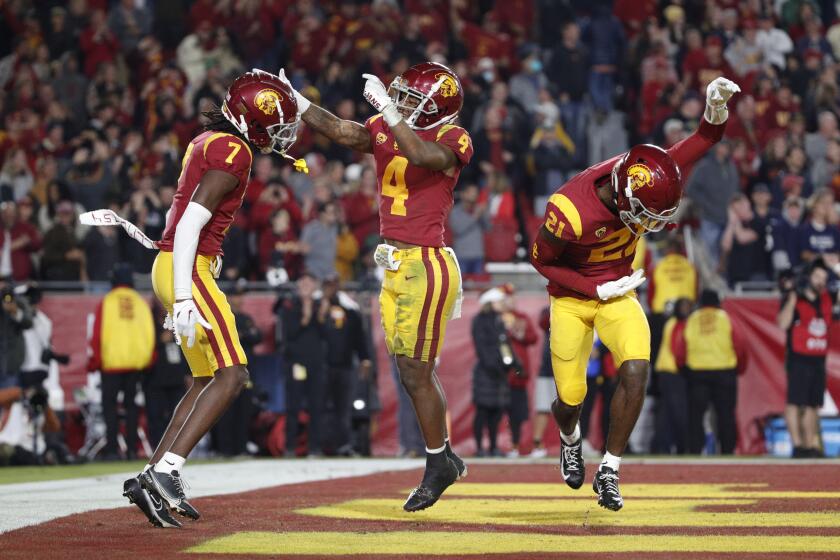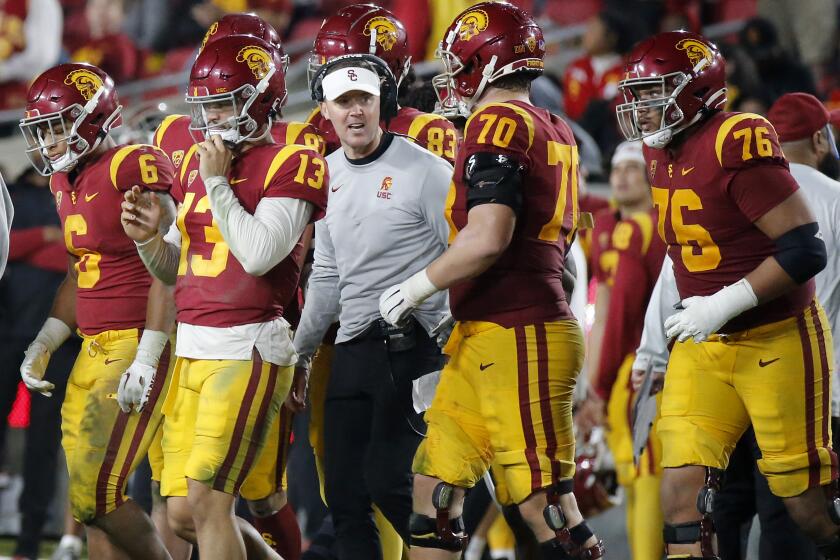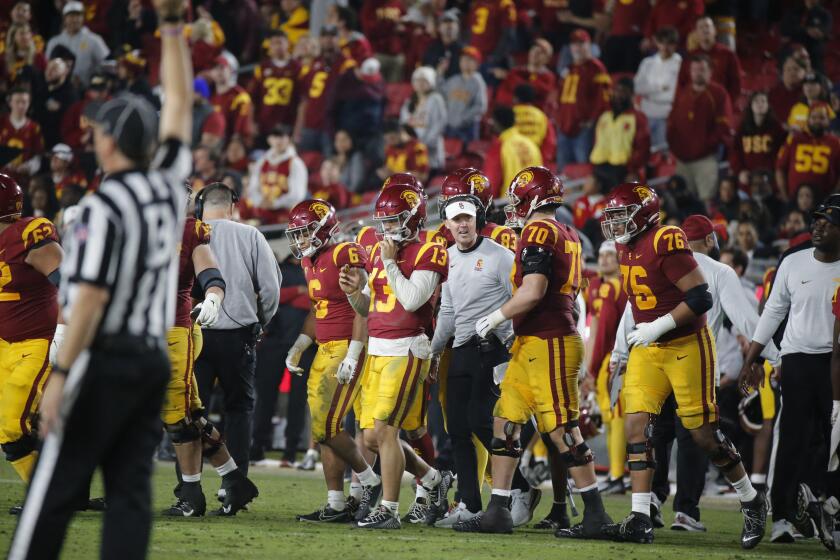Commentary: ‘Nothing is locked in’ for Rose Bowl’s future with College Football Playoff expansion
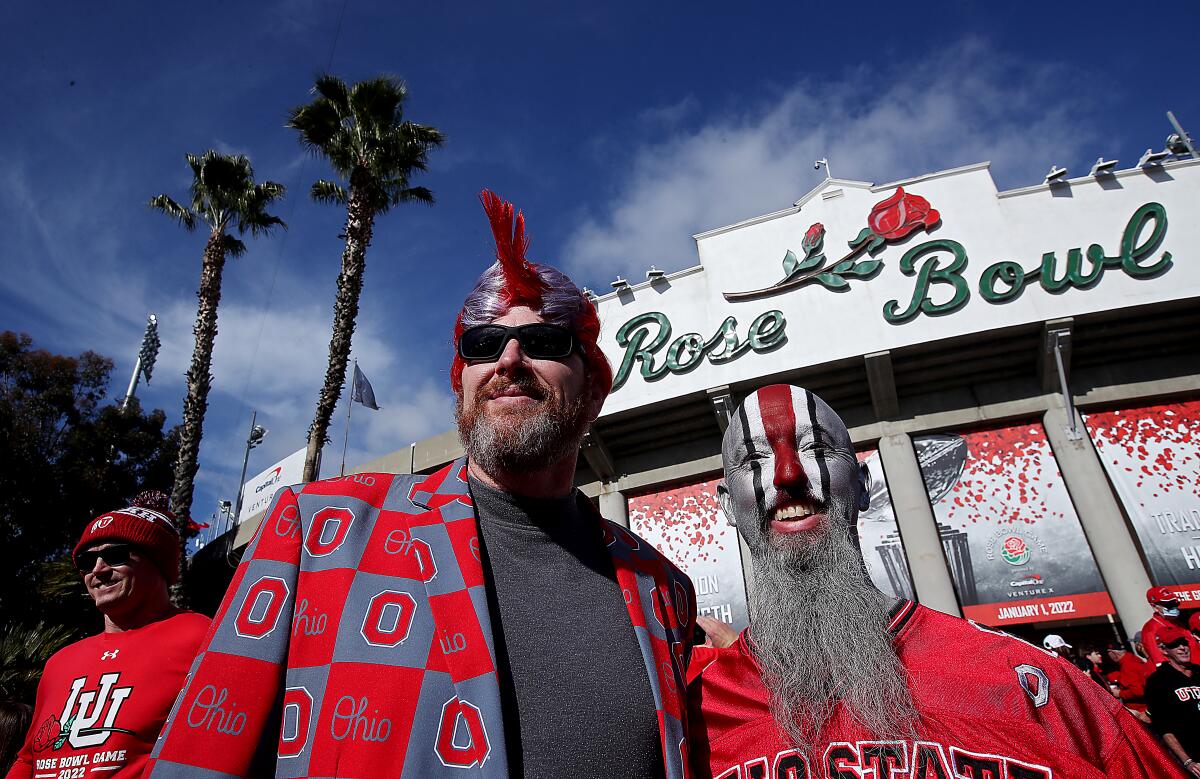
- Share via
As of Wednesday, the College Football Playoff did not have its answer after months of waiting. The Rose Bowl was still on the clock, and, accordingly, Pasadena attorney Laura Farber, the chairman of the game’s management committee, warned her opposing counsel that she would be taking lots of breaks that day during their deposition.
“I know why … Rose Bowl, right?” the opposing counsel said. “I’m not a college football fan, but my husband is.”
If you care about college football at all, Wednesday’s setup was overflowing with intrigue. The CFP was hoping to come to an agreement on early adoption of its new 12-team format, beginning in 2024, and the last box it needed to check was the “Granddaddy of Them All” signing off on amending the last two years of the current contract.
Commentary: Where does Lincoln Riley’s first-year turnaround at USC fit in college football history?
Where does USC’s first-year revival under Lincoln Riley rank among college football turnarounds? Here’s at look at what Urban Meyer, Ara Parseghian and others did.
As part of the negotiations, the Tournament of Roses was predictably trying to use its leverage — the CFP could not expand early and reap the benefits of an extra $450 million without the approval of all the New Year’s Six bowls — to preserve its traditions with assurances about the next contract starting in 2026.
But the CFP board of managers, made up of university presidents from around the country, was not willing to make any guarantees about the Rose Bowl keeping its exclusive viewing window at 2 p.m. on New Year’s Day in the future iteration of the playoff. College football’s most beloved sunset, finally, was not going to be placed above what is best for the sport.
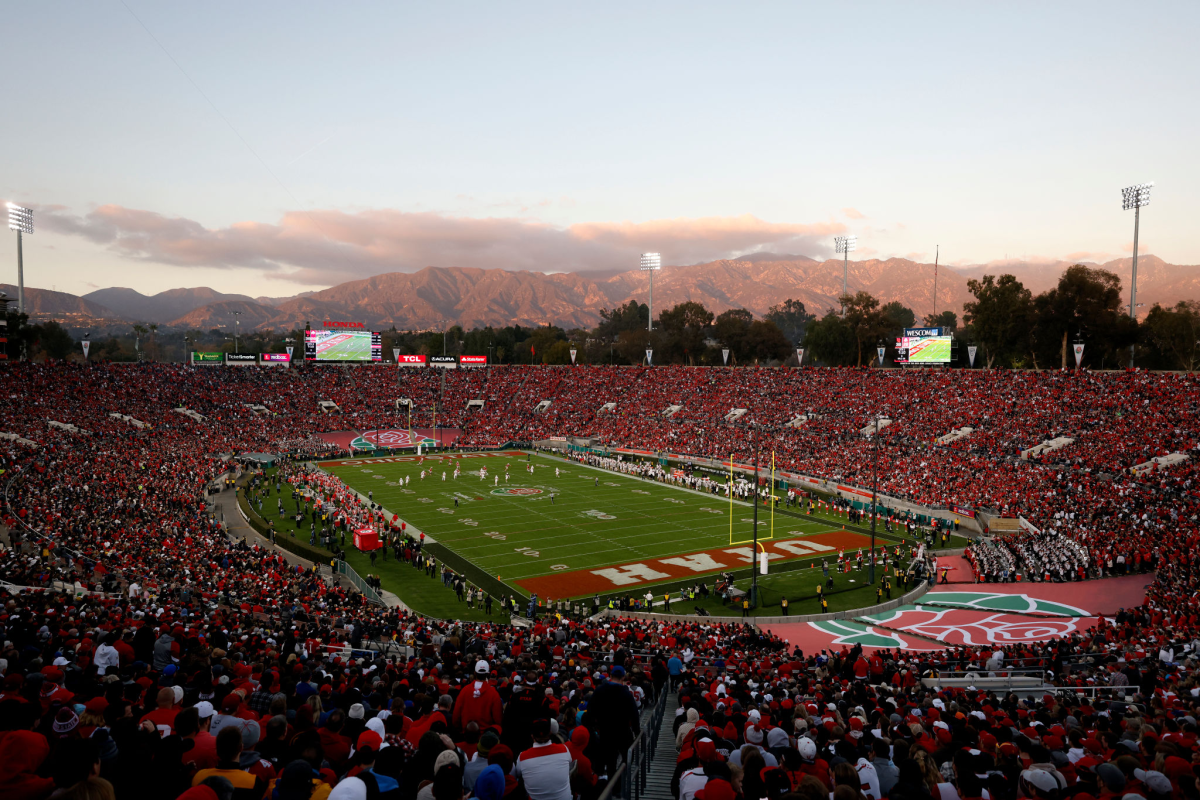
And so, the Rose was given a deadline of the last day of November to make its decision. As that day approached, reports leaked to national media outlets filled with anonymous rhetoric that clearly spelled out a threat: If the Rose Bowl denied early expansion, it could be kept out of the playoff going forward. A source with knowledge of the negotiations confirmed to me that the tenor of those reports was accurate.
Was there really a scenario in which the Rose Bowl was going to squash early expansion and risk being removed from college football’s postseason altogether? We’ll never know, but it seems unlikely.
USC came in No. 4 in this week’s College Football Playoff rankings. The Trojans would need to beat No. 11 Utah in the Pac-12 championship game to lock their spot in the playoff.
Wednesday night, Rose Bowl officials agreed to amend the current contract, with no assurances about its future scheduling. Thursday morning, the College Football Playoff announced officially it will expand to 12 teams for the 2024 and 2025 seasons.
Whew.
“We’ve always found ways, if you go back in history, from the BCS to the four-team CFP, to integrate the ‘Granddaddy of Them All’ into the ever-evolving postseason models, whatever they look like,” Farber told me Thursday morning.
“There was no intention of keeping early expansion from happening. In our negotiations, we had initially asked for an exclusive window around the Rose Bowl Game’s historic time slot, and while we relinquished that ask, the Tournament will continue to work with the CFP board of managers. It is our intent to keep the game on Jan. 1 at 2 p.m., but we need to remain flexible in scheduling as needed.”
Ultimately, the Rose Bowl needed the playoff more than the playoff needed that sunset.
Luckily, in 2024 and 2025, we will still get both. In the new format, the first round will feature seeds 5-12 playing on campus sites in mid-December. The quarterfinals will be staged at New Year’s Six bowls around New Year’s Day, with the semifinals following the next week also at New Year’s Six bowls and the championship game at a neutral site. Based on the bowl rotation, the Rose Bowl will host quarterfinals on New Year’s Day each year at its traditional time slot.
The looming question remains as to what happens in 2026 and beyond.
Will USC quarterback Caleb Williams and the Trojans beat Utah in the Pac-12 championship game? L.A. Times reporters answer that question and more.
“Nothing is locked in,” CFP executive director Bill Hancock said. “We will address all the bowls on the same basis when that time comes. I think it would be in everyone’s best interest for any CFP games that the Rose Bowl hosts to happen on New Year’s Day in their traditional window.”
But he can’t guarantee it, which is what the Rose Bowl was pursuing all this time.
In 2026, if the rotation holds, there would be a semifinal for the Rose Bowl. In order for that game to be played Jan. 1, the CFP would have to move up its currently approved schedule by a week. There are going to be discussions at the top of the sport about moving what is currently Week 1 to Week 0, but that appears to be far from imminent.
If the Rose Bowl hosted a CFP semifinal closer to mid-January, it is likely the tournament would still want to stage a nonplayoff game between Big Ten and Pac-12 schools at its traditional time to pair with the Rose Parade. But, since the CFP was reluctant to guarantee an exclusive viewing window, that game would likely be going up against a CFP quarterfinal.
“We plan to broadcast three [CFP] games on New Year’s Day,” Hancock said.
One thing everyone can agree on is that there is still a multitude of issues to examine before details of the next contract can be ironed out.
Lincoln Riley was clearly going to immediately improve USC football, but no one predicted his team would be this good during his first season.
It is possible that the CFP could decide to hold quarterfinal games on campus, too, allowing seeds 1-4 to benefit from hosting a home game just like seeds 5-8. That decision would further showcase the sport’s pageantry and keep fan bases from having to travel to neutral sites potentially three straight weeks. It would also lessen the power grip of the bowl games on the whole process, which can only be a positive development.
For now, all we know is the playoff is expanding, providing three times as much access for players to pursue a national championship. And, thanks to its decision to stand down, the Rose Bowl will retain a prominent seat at the table for whatever is to come. Expect the tournament to continue to straddle the line, trying to protect its traditions but not to the point of sacrificing its grand stature earned over a century.
This should be a happy day for L.A. area college football fans, who now don’t have to imagine a world in which the sport’s postseason does not have a meaningful tie to Southern California.
But we all should prepare ourselves for a slightly altered sunset experience.
More to Read
Go beyond the scoreboard
Get the latest on L.A.'s teams in the daily Sports Report newsletter.
You may occasionally receive promotional content from the Los Angeles Times.

